| One of the most memorable days during our trip away was the time spent at Canterbury Cathedral, the resting place of the Black Prince, it was at the top of our agenda - a true 'must see' event for both Cathy A and Cathy T. We travelled to Canterbury by coach, which gave us the opportunity to see a little more of the beautiful, English countryside. |
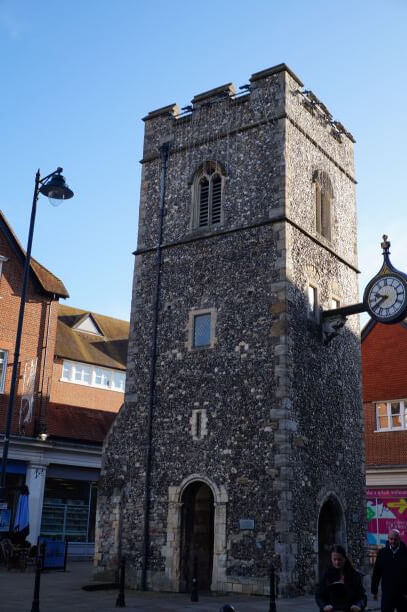 |
 |
 |
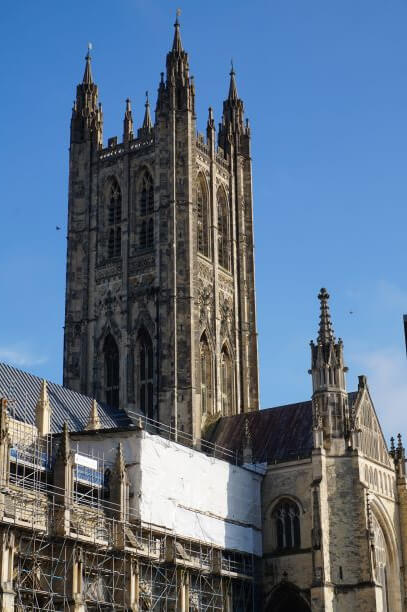 |
 |
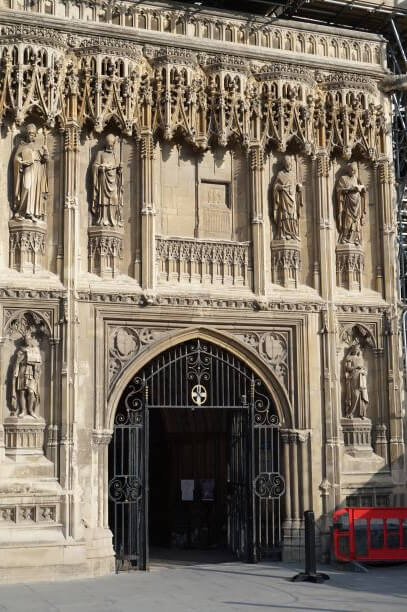 |
| Cathy A and Cathy T took a leisurely walk through the medieval town of Canterbury before entering the cathedral precinct. On the day of the visit, the cathedral was encapsulated within scaffolds and canvas as vital restoration work was undertaken. |
 |
 |
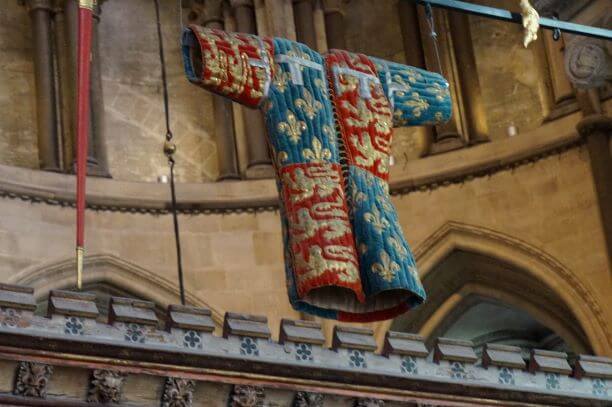 |
| Standing beside the tomb of the Black Prince was a truly memorable. A major character within Lions and Lilies, it really was a special moment for both authors. Edward's heraldic 'achievements' (shield, helm and crest, jupon, scabbard and gauntlets) are carefully preserved in a glass case nearby, but modern copies of these appear above his tomb. The jupon (close fitting tunic) is the only surviving English example of the period. The shield is of poplar wood, glued with layers of linen, and bearing heraldic charges of boiled leather. The huge iron helm is cylindrical with a flat top, eye holes and breathing holes. It has no visor, and was intended only for jousting. The helm is surmounted by a crest, consisting of a lion standing upon a cap of maintenance (with lion hair represented in plaster), both made from leather. The hat is lined with red velvet. The scabbard and belt have survived, but not the sword. The gauntlets are of copper gilt and are lined with soft doeskin. Most of these items are associated more with jousting that with warfare. |
 |
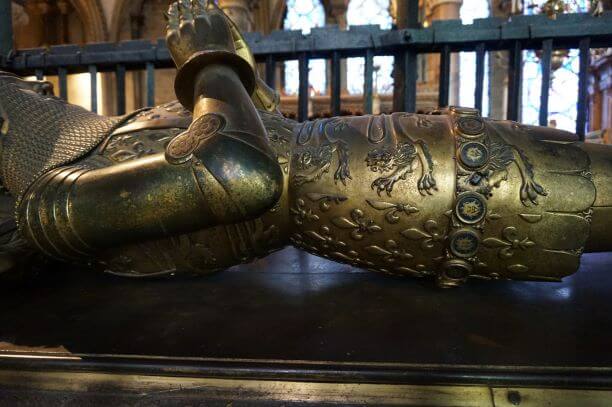 |
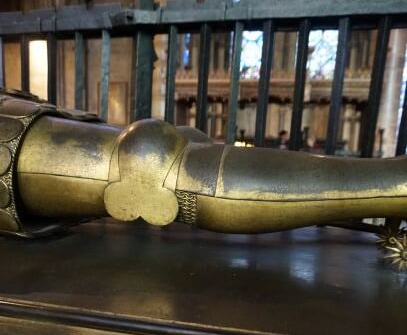 |
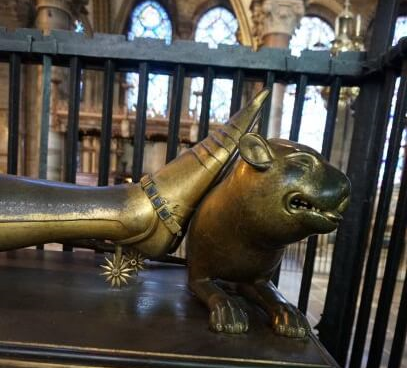 |
| The painted tester, above the effigy, is made of wood and was hand painted. The image depicts The Trinty and though a little difficult to view, there is a copy on the adjacent wall. |
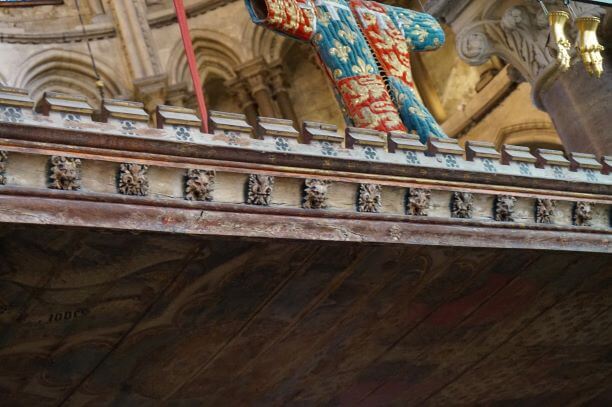 |
 |
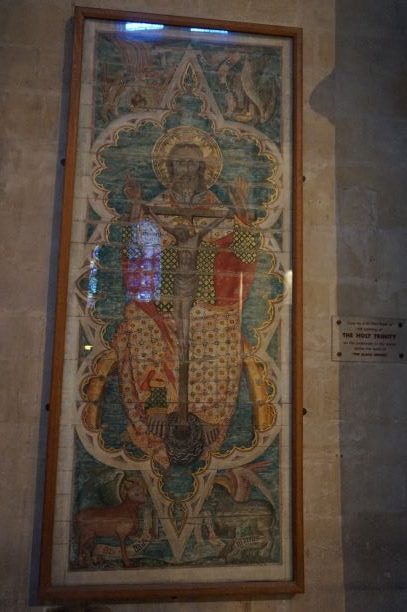 |
| The three ostrich feathers and motto 'Ich dien' (I serve) survive to this day as emblem and motto of the Prince of Wales. The fleur de lys, denoting the claims of Edward III to the French crown, appears on alternate shields around the tomb. |
 |
 |
| Canterbury Cathedral also once housed the shrine to Thomas Becket which was totally destroyed during the Reformation in 1540, when King Henry VIII ordered his bones to be destroyed and all mention of his name obliterated. Today, the place of Thomas’ death in Canterbury Cathedral is marked by a simple stone bearing his name. |  |
 |
Cathy A was delighted to be able to catch up with, and introduce Cathy T to her Uncle and Aunt, who reside in Bexhill on Sea for lunch in a fabulous restaurant on Castle Street. The day was finished off with a shopping trip to WHSmith (a first for Cathy T) so that the ladies could indulge is the many varied books, magazines and Christmas cards not available in Australia. |
